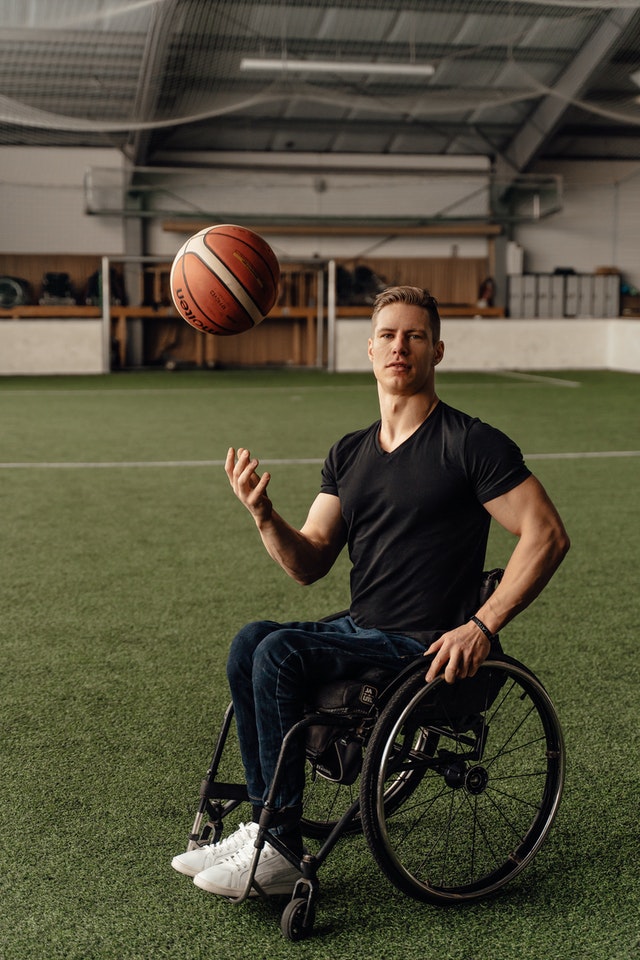
The Tokyo Paralympic Games gave fans the opportunity to witness incredible athletic achievements by Canadian Paralympians. However, within the parasport community itself, inclusivity and access is a real issue, especially for those who don’t fit the mould of how some think an athlete “should” look or move.
The International Paralympic Committee’s (IPC) vision is to foster a more inclusive world through parasport. This is primarily supported through its strategic goal of promoting the Paralympic movement at all levels by encouraging participation in parasports, especially for athletes with high support needs.
But some of these athletes, those who use powerchairs — wheelchairs propelled by electric motors — to play sports, including boccia, powerchair soccer and powerchair hockey, are underrepresented in the Paralympics, and in parasport more broadly. Canada needs to create community-based sport programming for athletes with disabilities, especially those who use powerchairs to train and compete.
Athletes with high support needs
Athletes with high support needs can have a variety of physical, vision and intellectual impairments that require additional support at competitions. Support may involve directly assisting athletes during competition, or with everyday living needs. For example, an athlete with limited hand function may need assistance to load a pistol in a shooting event or get dressed for the day. They may also have a greater degree of physical impairment (such as cerebral palsy or muscular dystrophy) and use powerchairs.
Powerchair sports are played by people with a physical disability who use power wheelchairs. Powerchairs make sport accessible to athletes with greater physical disability and eliminate performance differences usually associated with gender and age.
Because of this, powerchair sports are considered some of the most inclusive sports because they allow athletes of diverse abilities, ages and genders to compete together on one team. Because the use of powerchairs minimizes the impact of impairment on competition, athletes who use a powerchair to compete succeed largely as a result of their sporting ability.
Under-representation
Despite being capable of high-performance international sport competition, athletes with high support needs who use powerchairs are underrepresented. For instance, only about five per cent of the Canadian Paralympic Team are daily powerchair users. Of the 22 sports included in the current summer Paralympics, only boccia, archery and shooting feature athletes who use powerchairs while competing.
Unsurprisingly, the limited opportunities for powerchair-using athletes at the elite level also trickle down to the recreational level. This brings into question whether the IPC will be able to meet its strategic goal, especially when considering the influence of commercial interests.
Scheduled live coverage of the Tokyo Paralympics in Canadian television broadcasts didn’t include boccia, leading to missed opportunities for audiences to appreciate the athleticism of these competitors. (All sports with live feeds are available to be live-streamed or viewed on-demand.)
Marketability and media exposure
Previous research suggests athletes with high support needs receive less media coverage because their performances are not considered “esthetically pleasing.” These perceptions also affect audience recognition of the performances as being elite or high-level.
Assigning value to parasport performances based on marketability perpetuates a lack of inclusion. It also affects the amount of exposure certain parasports get, which in turn limits access to financial resources.
If the media provided greater exposure to athletes with high support needs, it could broaden the general public’s perceptions of what elite sport performance looks like. It could also result in more parasports gaining access to the social and economic capital needed to grow their sport and develop athletes.
Corporate sponsors and the media can minimize concerns that it’s risky to push parasports that feature athletes with high support needs. The IPC could embrace more sports that include athletes who use powerchairs, by wielding financial and social influence to spotlight athlete accomplishments.
Changing perceptions of elite athletes
We need to reimagine our perception of athletes beyond the mainstream understanding of sports. Highlighting the talent of athletes who compete using powerchairs may challenge the societal prejudices that contribute to the marginalization of people with complex disabilities.
Participation in sport offers physical, social and psychological benefits for children, youth and adults with disability. Yet powerchair sport is not widely available in Canada, and research to inform program development is lacking. Tailored powerchair sport programming is sorely needed to create opportunities for quality participation among high support needs athletes.
Recreational programs are the way forward
Canada has powerchair sport programs for international-level competition, but it lacks the recreational programs needed to foster interest, engagement and athlete development. Creating more parasport opportunities for people who use powerchairs will give more Canadians the chance to participate in sports while fostering the development of those who aspire to compete internationally.
To address this need, our research team has partnered with the Canadian Paralympic Committee, Ontario Parasport Collective, PowerHockey Canada and other stakeholders to close the gaps in community-based sport programming for athletes with disabilities, especially those who use powerchairs. We are working to develop a resource guide for building high quality powerchair sport programs and aim to use this guide to establish programs in communities of 50,000 people or more.
In order to build long-lasting programs, we must meaningfully collaborate with the communities the programs are intended to serve, so we have adopted integrated knowledge translation principles for this project. These principles make sure our research is conducted as ethically as possible. Over the next several months, we plan to speak with members of the powerchair sport community and community-based organizations interested in offering powerchair sport opportunities. This collaboration will transform the landscape of powerchair sport in Canada.
By: Jordan Herbison
Disclosure statement
Jordan Herbison receives funding from Mitacs the Sport Science Institute at McGill University.
Amy Latimer-Cheung receives funding from MITACS in partnership with the Canadian Paralympic Committee and the Social Sciences and Humanities Research Council of Canada.
This post was originally published at The Conversation.



